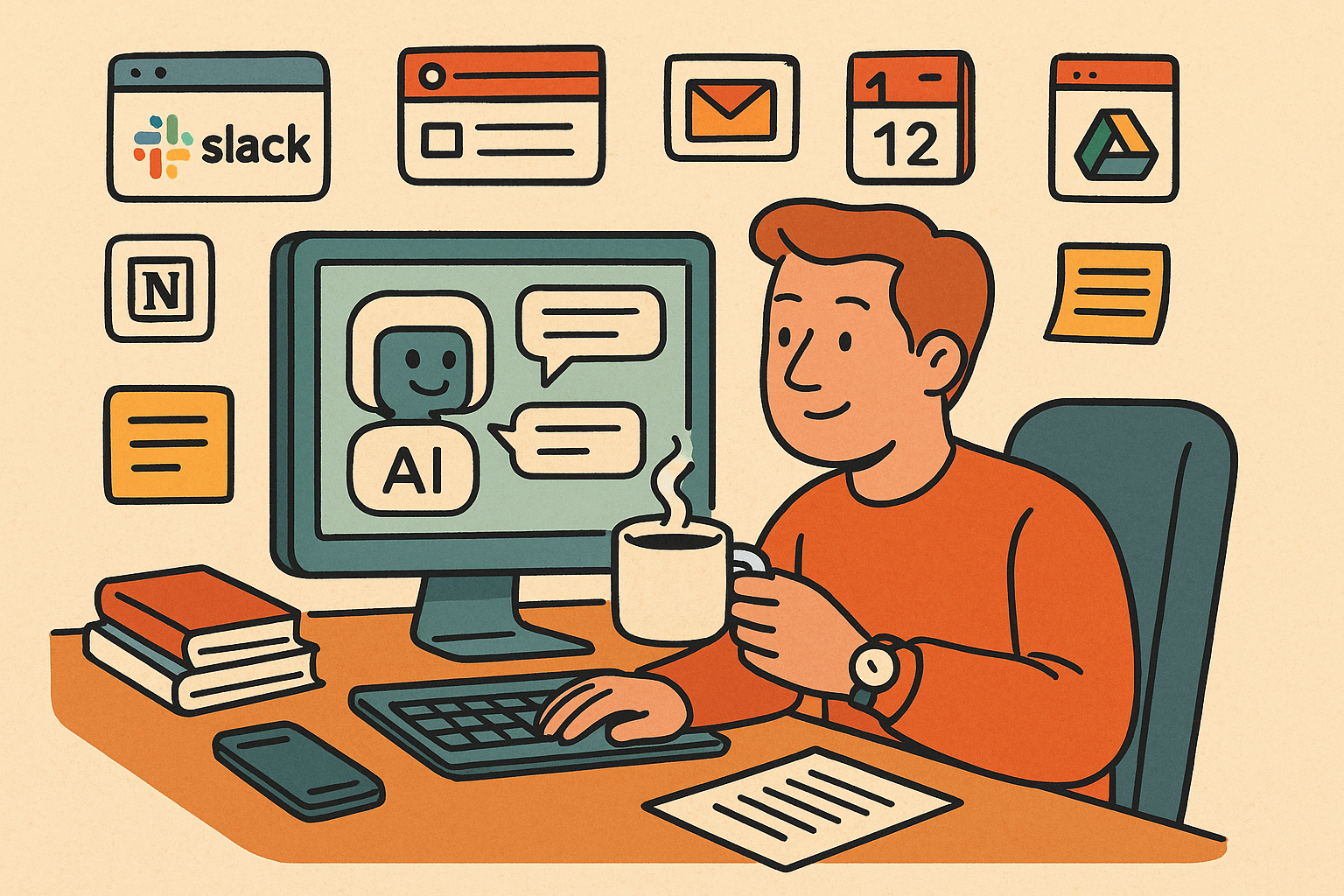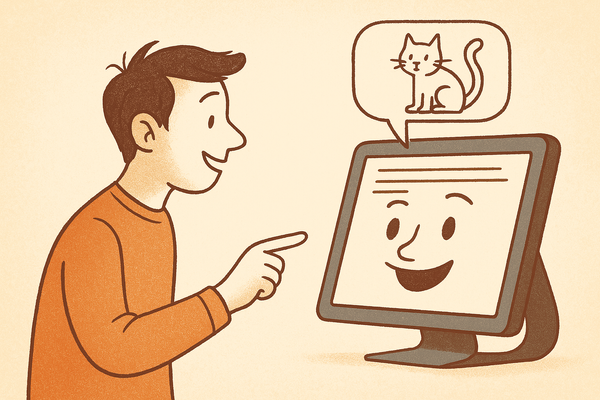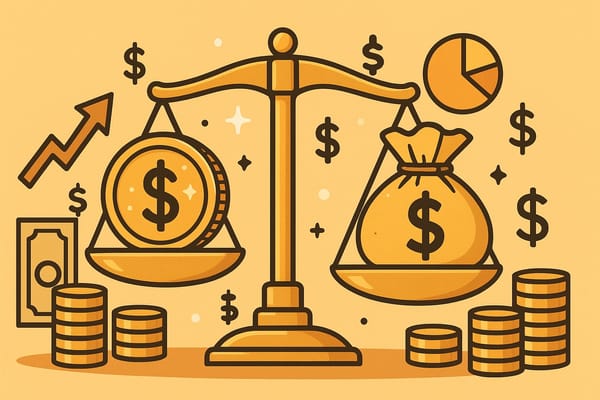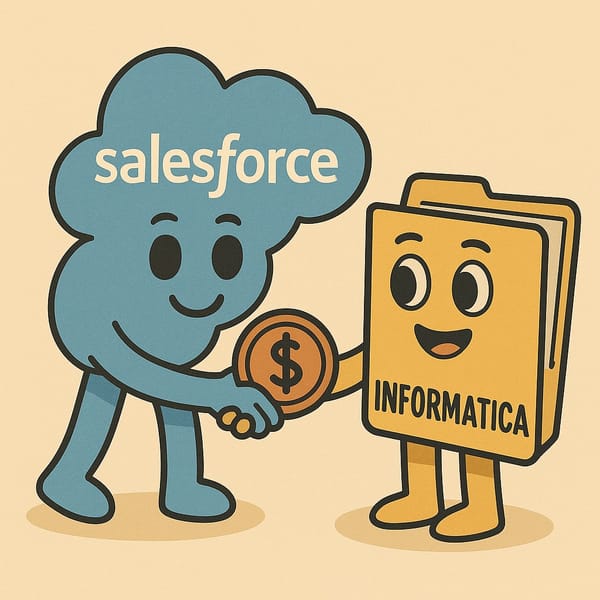What Comes After the Internet
Every generation gets its Gutenberg moment. Ours just talks back. If the printing press gave us literacy and the internet gave us access, the age of useful machines is giving us something stranger: systems that respond.

When historians look back at this strange, accelerating moment we're living through, they'll recognize a pattern we've seen before. Not the pattern of incremental progress—faster chips, better batteries, higher resolution screens—but something deeper. The kind of tectonic shift that reshapes not just what we can do, but who we become.
The printing press didn't just make books cheaper. It fundamentally rewired medieval society by democratizing knowledge. The internet didn't just connect computers. It collapsed geography and created a global consciousness. And now, artificial intelligence isn't just automating tasks—it's creating an entirely new relationship between humans and machines.
We are witnessing the birth of the third great information revolution.
From Pages to Screens to Conversations
Consider how radically information access has evolved:
- The Age of Print (1450-1990): Information was physical, bound in books, controlled by gatekeepers, and limited by geography. Knowledge required proximity to libraries and institutions. As one researcher notes, "Before the printing press, knowledge was a luxury good. Books, hand-copied by monks with weary fingers, were more valuable than gold. The press reversed this — transforming books into commonplace items. Knowledge was no longer a privilege of the elite; it became accessible to all" (Level Up Design, 2023).
- The Age of the Internet (1990-2022): Information became digital, hyperlinked, and accessible from anywhere. Knowledge expanded exponentially, but was still static—we searched, found, and consumed. The internet replaced the printing press as "the primary tool for information dissemination" (Center for Mobile Communication Studies, 2017).
- The Age of Useful Machines (2023-?): Information has become responsive, generative, and conversational. Knowledge isn't just accessed—it's synthesized, personalized, and delivered through dialogue. In this era, AI "not only creates and processes information – it can also act on it, which can make it more powerful and unpredictable" (Quocirca, 2024).
Each transition didn't merely add capabilities—it transformed how we think and live.
Why This Isn't Just "AI" or "Next-Gen Apps"
You've likely noticed the change already, even if you haven't named it. Perhaps you've had that uncanny moment when ChatGPT seemed to genuinely understand your question. Or when GitHub Copilot completed not just a line of code, but an entire algorithm you were thinking about. Or when you realized you hadn't opened Google in days because you're just...talking to your computer now.
What's emerging isn't merely smarter software. It's a new paradigm of human-machine interaction where:
- Interfaces respond rather than react
- Skills are modular rather than bundled
- Intelligence is ambient rather than enclosed
- Tools behave more like collaborators than utilities
This shift feels different because it is different. The defining characteristic isn't that machines are getting smarter (though they are). It's that the boundary between tool and user is blurring. Large language models have introduced "a paradigm shift in interaction with AI technology, enabling knowledge workers to complete tasks by specifying their desired outcome in natural language" (Brachman et al., 2025).
The Gutenberg Parallel
When Johannes Gutenberg introduced movable type printing to Europe in the 1450s, books existed but were precious, rare objects. A Bible might cost as much as a house and take a year for a scribe to copy. Within decades of Gutenberg's innovation, books became accessible to the middle class, literacy rates surged, and Europe underwent an information explosion that directly enabled the Renaissance, the Scientific Revolution, and eventually the Enlightenment.
The printing press didn't just make more books—it rewired society itself. It "signalled the start of the information revolution, enabling mass production and distribution of printed materials such as books, newspapers, and posters. It fostered creation and expression of information and accelerated the spread of literacy in Renaissance Europe" (Quocirca, 2024).
Today's large language models and generative AI systems are creating a similar inflection point. Just as the printing press externalized memory and knowledge preservation, these new systems are beginning to externalize synthesis, creativity, and certain forms of cognition.
What This Means For You
If you're reading this, you're likely someone who builds things, thinks about the future, or works in knowledge fields. You're wondering: is this going to change my job? My industry? My skills?
The honest answer is yes, but not in the way most headlines suggest.
The most profound changes coming aren't job displacement (though some of that will happen). The real transformation is in how we'll work, create, and solve problems. As one CEO stated about knowledge work, "I could easily see 30% of that getting replaced by AI and automation over a five-year period" (Bloomberg, 2023; cited in Brachman et al., 2023). But replacement doesn't mean elimination—it means transformation.
LLMs are already impacting various industries "from finance to insurance, human resources to healthcare and beyond, by automating customer self-service, accelerating response times on an increasing number of tasks as well as providing greater accuracy, enhanced routing and intelligent context gathering" (IBM, 2025).
The jobs of 2030 will include roles we can barely conceive of today:
- Prompt engineers who specialize in "teaching" AI systems domain-specific knowledge
- AI orchestrators who design workflows between multiple specialized models
- Model marketplace operators who curate and rate AI capabilities
- Machine behavior specialists who ensure AI systems operate ethically and effectively
More fundamentally, all knowledge work is being rewritten. The baseline of productivity and capability is rising dramatically. The skills that will matter most won't be memorization or even technical execution—they'll be judgment, taste, strategy, and the uniquely human ability to know what matters.
The Three Layers of Change
As we explore this new territory, it helps to think about three distinct layers of transformation happening simultaneously:
- The Interface Layer: How we interact with machines is shifting from clicking to conversing, from menus to natural language. Studies show that knowledge workers imagine "a future with LLMs integrated into their workflows and data" (Brachman et al., 2025).
- The Capability Layer: What machines can do is expanding from computation to comprehension, from data processing to creative synthesis. LLMs can now perform tasks like "generating code or improving text" (Brachman et al., 2025) and can "generate text, summarize documents, translate languages, and even create code" (IBM, 2025).
- The Systems Layer: How software is constructed is evolving from linear applications to orchestrated models, from rigid programs to adaptable agents. This allows for "multimodal large language models (LLMs) [that] integrate and process diverse types of data (such as text, images, audio, and video) to enhance understanding and generate comprehensive responses" (GeeksforGeeks, 2024).
In the articles that follow, we'll dig deep into each of these layers, exploring not just the technology but the economic, cultural, and philosophical implications.
What's Different This Time
Every technological revolution comes with its own narrative. The personal computer was about democratizing computing. The internet was about connecting everyone. The smartphone was about computing everywhere.
The narrative of useful machines is about a deeper collaboration between human and artificial intelligence. It's not about replacing people—it's about expanding what we can accomplish. Similar to the printing press which "directly motivated the far-reaching movement of Renaissance where emerged thousands of glamorous works across fields of painting, sculpture and literature" (Center for Mobile Communication Studies, 2017), AI promises to unlock new forms of human creativity and capability.
Critically, this is not the science fiction version of AI that gains consciousness or seeks world domination. It's the practical reality of systems that can understand context, generate ideas, solve problems, and act on our behalf. The technology we're discussing "includes but is not limited to: search results, such as news articles, blog posts, interviews, book excerpts, song lyrics, poetry, stories, movie or radio scripts, software code, academic articles, and so on" (IBM, 2025).
These machines aren't becoming human. They're becoming useful in ways that amplify our humanity.

Join Me On This Journey
This series is my attempt to map this emerging territory—not from the perspective of a futurist or an academic, but as a practitioner trying to understand what's possible and what's next.
In the coming posts, we'll explore:
- How talking to machines like they're people changes everything about interface design
- Why AI that can delegate to other AI is the key to truly useful systems
- How a new marketplace for intelligence is emerging, and who will own it
- Why copy-paste work is disappearing, and what that means for all of us
- What happens when everyone has access to a hundred digital hands
- Why the next big computing platform won't look like anything we've seen before
If you're building in this space, thinking about how it affects your work, or simply curious about where technology is heading, I hope you'll find ideas here that challenge, inspire, and provide clarity.
Because one thing is certain: what comes after the internet isn't just an iteration. It's a transformation. And it's already happening.




